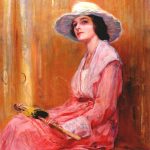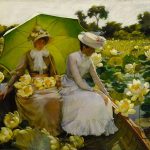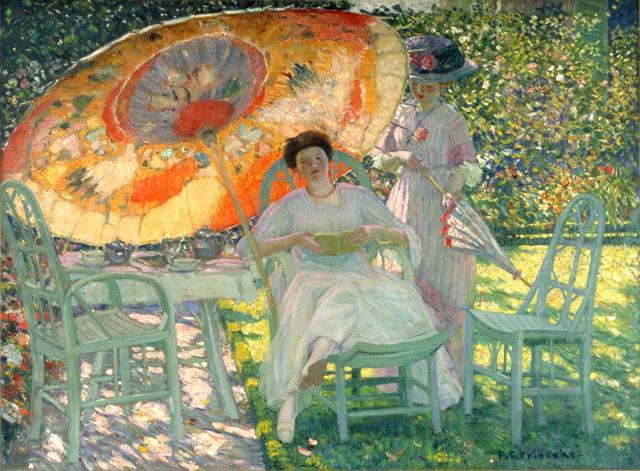
Frederick Carl Frieseke (1874-1939) was an American painter celebrated for his role in the development of Impressionism, particularly the American Impressionist movement. Born in Owosso, Michigan, Frieseke’s work is renowned for its vibrant use of color, light, and the intimate portrayal of his subjects, often focusing on women in interior or garden settings. His style, while rooted in Impressionism, carried a distinct personal signature, showcasing a blend of bold color palettes and a deep appreciation for the interplay of light and shadow.
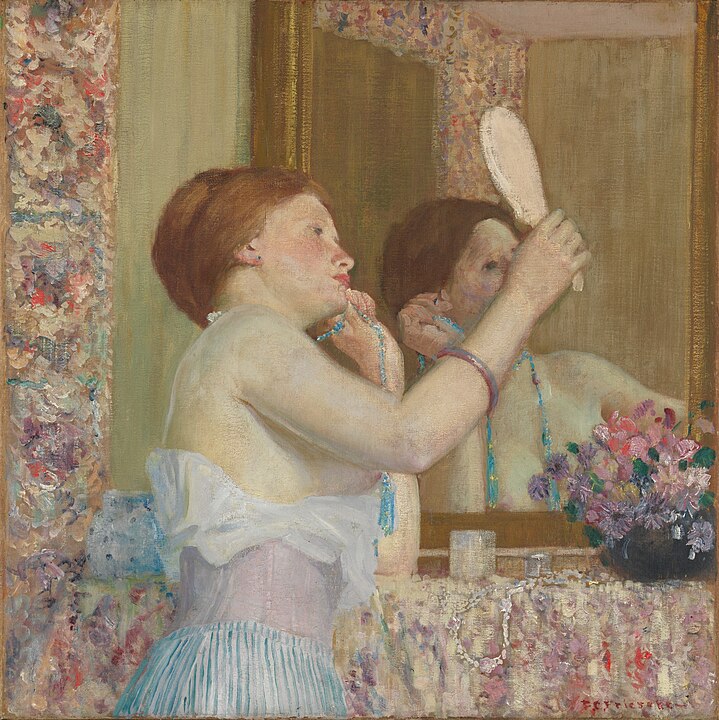
Frieseke embarked on his artistic journey at the School of the Art Institute of Chicago before moving to New York to study at the Art Students League. His quest for artistic development led him to Paris, the epicenter of the art world at the turn of the 20th century. In Paris, he enrolled at the Académie Julian and later at the Académie Colarossi, immersing himself in the vibrant artistic community and the burgeoning Impressionist movement.
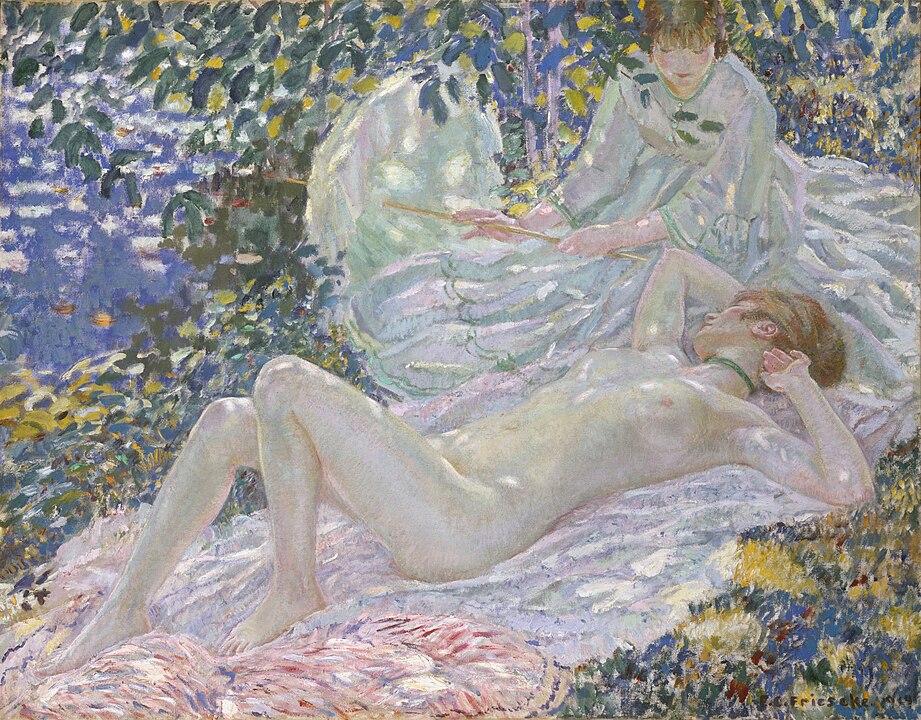
The pivotal moment in Frieseke’s career came with his move to Giverny in 1906, where he became a neighbor of Claude Monet, the father of French Impressionism. While Frieseke was influenced by Monet’s emphasis on light and color, he developed his unique approach, focusing more on the figurative aspect and often incorporating elements of decorative design into his compositions. This period in Giverny was highly productive and marked the maturation of his distinctive style.
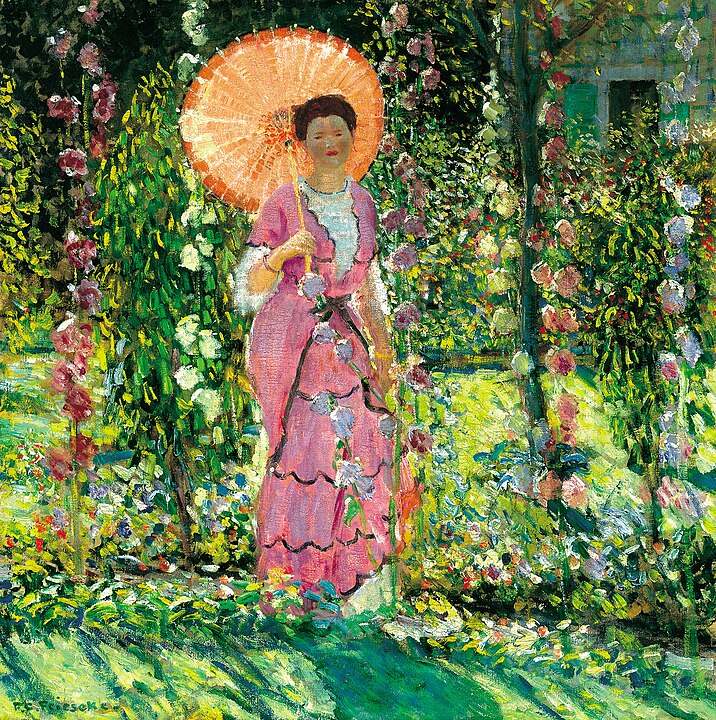
Frieseke’s paintings from this era are characterized by their luminous quality, with dappled light filtering through leaves and fabrics to create vibrant, dynamic scenes. His subjects, frequently women in contemplative or domestic settings, are rendered with sensitivity and a palpable sense of privacy and introspection. This focus on the female figure, combined with his mastery of color and light, aligns him with other American Impressionists yet sets him apart due to his unique stylistic approach.
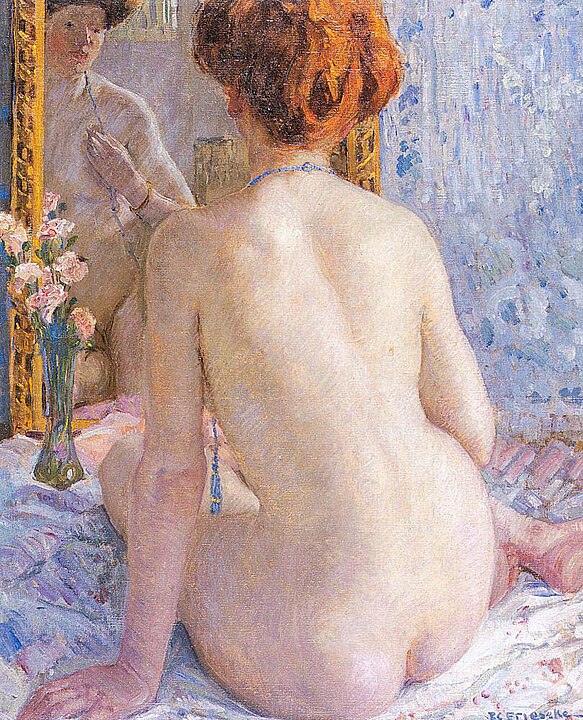
Throughout his career, Frieseke enjoyed considerable success, both in Europe and the United States. He exhibited widely, receiving numerous awards, including a Gold Medal at the 1915 Panama-Pacific International Exposition in San Francisco. Despite his affinity for France and its artistic environment, Frieseke maintained strong ties to the American art scene, contributing significantly to the acceptance and development of Impressionist techniques and themes in American art.
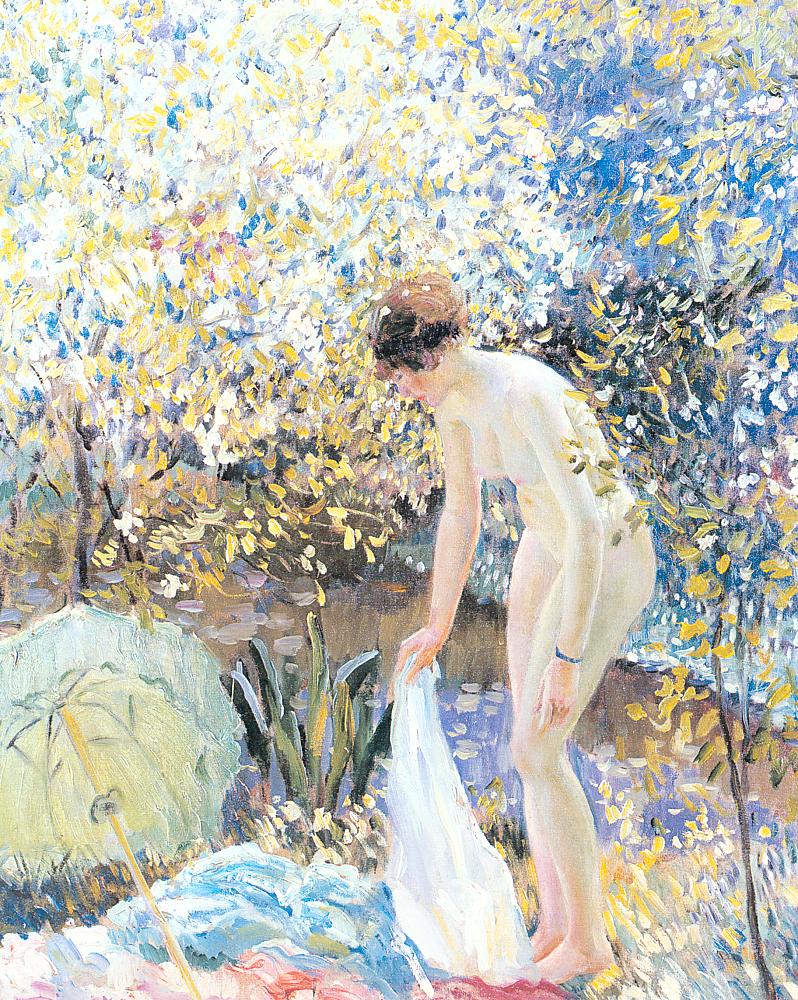
In the later years of his life, Frieseke’s work underwent a subtle transformation, with a shift towards a more muted palette and a greater emphasis on form and structure. Nevertheless, his dedication to exploring the nuances of light and color remained undiminished. He continued to paint until his death in Normandy in 1939, leaving behind a legacy that significantly impacted both the Impressionist movement and 20th-century American art.
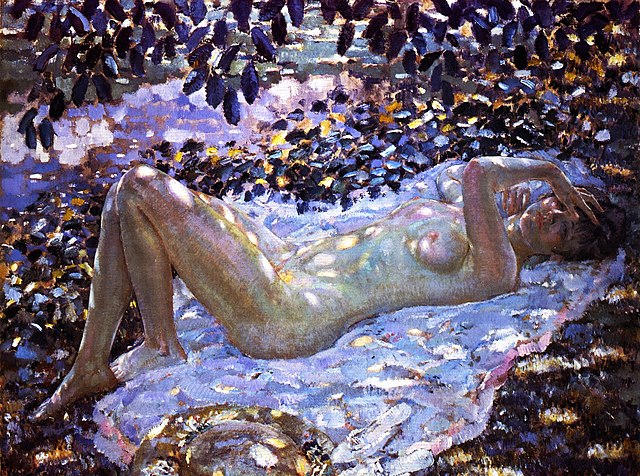
Today, Frederick Carl Frieseke is remembered as a pioneering figure in American Impressionism, whose work bridges the gap between the French Impressionist tradition and the development of a distinctive American aesthetic. His paintings are celebrated for their technical skill, evocative use of color, and the ability to capture the ephemeral beauty of light and moment. Frieseke’s contributions to art are preserved in major museums and collections worldwide, where they continue to inspire admiration and study for their vibrant depiction of life and nature.




